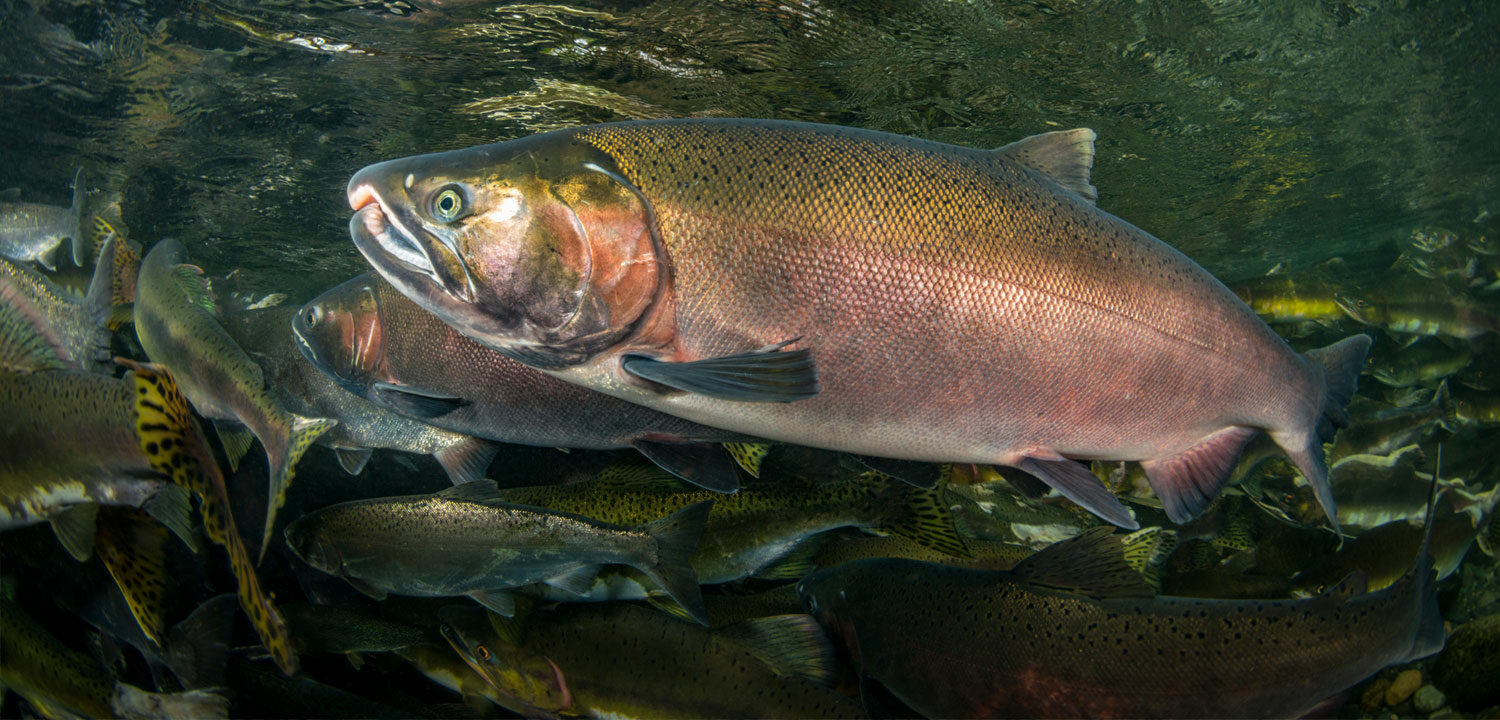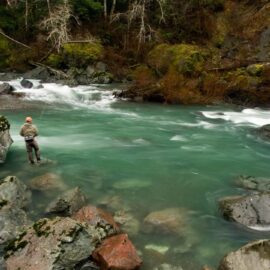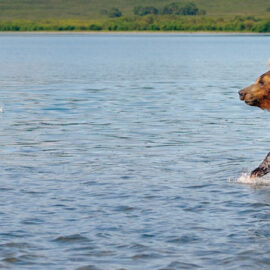The board directs Oregon’s forestry department to comply with state law, requiring it to study and create protections for this threatened keystone species.
The Oregon Board of Forestry recently voted to pursue new protections for Oregon’s threatened coast coho salmon.
The 5-2 vote on July 24 approved a petition filed by 22 groups including the Wild Salmon Center, asking the Oregon Department of Forestry to study and develop new rules to protect high value coho streams throughout the state. The step is mandated by state law for species listed under the Endangered Species Act. But the agency had delayed the study and protection of high value coho streams, known as “resource sites,” for two decades.
Under direction of the board, the forestry department will now begin the work of identifying and designating resource sites—habitat key to coho spawning and rearing—on state and private forest land. (The state has already done this for osprey, great blue herons, bald eagles, and the marbled murrelet.) Once coho resource sites are designated, the board will create rules to protect these sites from the most harmful impacts of commercial timber harvest, road construction, runoff, and vegetation removal.
Coho are the most wide-ranging of the state’s native salmon, traveling from headwaters through tributary streams, wetlands, and beaver ponds out to the Pacific. By protecting coho and their expansive habitat, we protect habitat for all Oregon salmon. Oregon’s three distinct coho populations are all federally listed as threatened; one, the Lower Columbia population, is endangered.
Wild Salmon Center has been working on both the forest policy and habitat restoration fronts to protect this important keystone species on the Oregon coast. Since 2015, the Wild Salmon Center has led work on the Oregon coast by the Coast Coho Partnership to identify and prioritize the most important sites and activities for restoration. And beginning in 2018, we teamed with partners to restore vital coastal habitat for coho in the Siuslaw, Nehalem, and Elk, watersheds. We’ve also commenced prioritization this fall on the Siletz, Upper Rogue, and Coos Bay systems. All told, Wild Salmon Center has raised $5 million for strategic coho restoration work.
Our policy reforms have included work with the Board of Forestry to improve streamside protections on private forestland and securing conservation areas in the Tillamook State Forest. Now, with the board’s latest vote, work can continue to fix forest management practices that for too long have enabled logging and road construction alongside fish-bearing streams, resulting in ongoing water quantity and quality issues and a loss of stream complexity. According to a 2005 assessment by the Oregon Department of Fish & Wildlife, these impacts are the main factors hindering the recovery of Oregon coho.
Fixing forest practices will put us on a path toward our long-term goal: fully recovering Oregon coast coho populations, and delisting them from the Endangered Species list.




